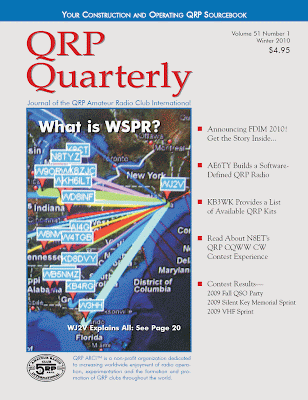Words of wisdom from Chuck Adams, K7QO:Wednesday, February 24, 2010 12:11 AM
To:
qrp-l@mailman.qth.net
This posting due to the traffic on the SST reverse
voltage application.
Here is what I do. There is a diode, the 1N5817,
a
Schottky Diode. Will take 20V peak reverse voltage,
will handle 1A continuous with 25A surge and has only
a 0.45V forward drop and the reverse current is 500uA.
I put one of this in series with the 12V line input of
every electronic device I build. If the designer used
a 1N4001-7 in series, I replace it.
I am not a fan of the diode across the voltage input
line and having it short out when reverse voltage is
applied. What if the applied voltage is a gel-cell
without a fuse? You blow the diode and you blow the
rig. IMHO is this not an ideal way to do it. Should
be using fuses too, but I don't. Haven't found a way
to use the flat auto fuses with gel-cells in a handy
low-profile way and inexpensive parts. I'd appreciate
the education, if someone has film and photos of great
arrangements.
I buy the diodes from Mouser.Com for about $26 per 250.
For a dime a rig it is a real cheap way to protect your
equipment from yourself and others.
With the limit of 1A at 13.8V, it is well within the
QRP operating limits. And why do you need more than
1A anyway?????? :-) And the low
forward voltage
drop means that the finals (which are usually fed
direct from the B+ line anyway) don't lose much
in applied voltage and you get pretty much the
same output as without the diode. And you protect
those expensive parts for a dime. A quarter if you
buy just one diode from Mouser.
Hope this helps. Just the way I do it, and I'm
not always right. But I've only lost a few parts
and that was before I started using 1N5817's on
everything.
The 1N4001 through 1N4007's are fine if you are
feeding 9-12V to a 78L08 regulator.
FYI
chuck
--
chuck adams, k7qo
http://www.k7qo.net/chuck.adams.k7qo@gmail.com



























